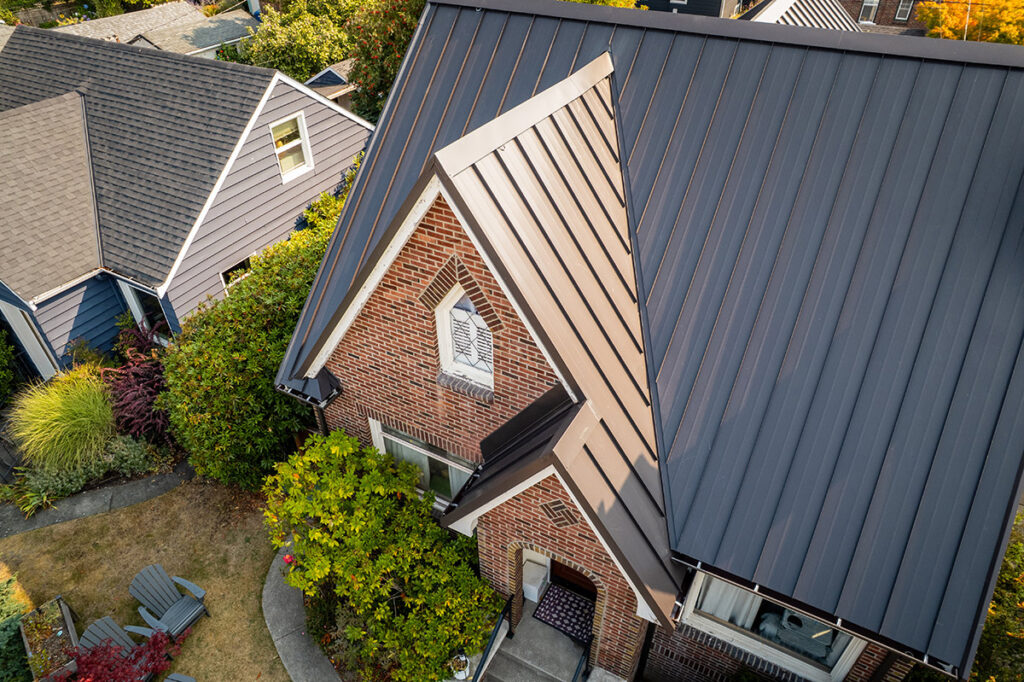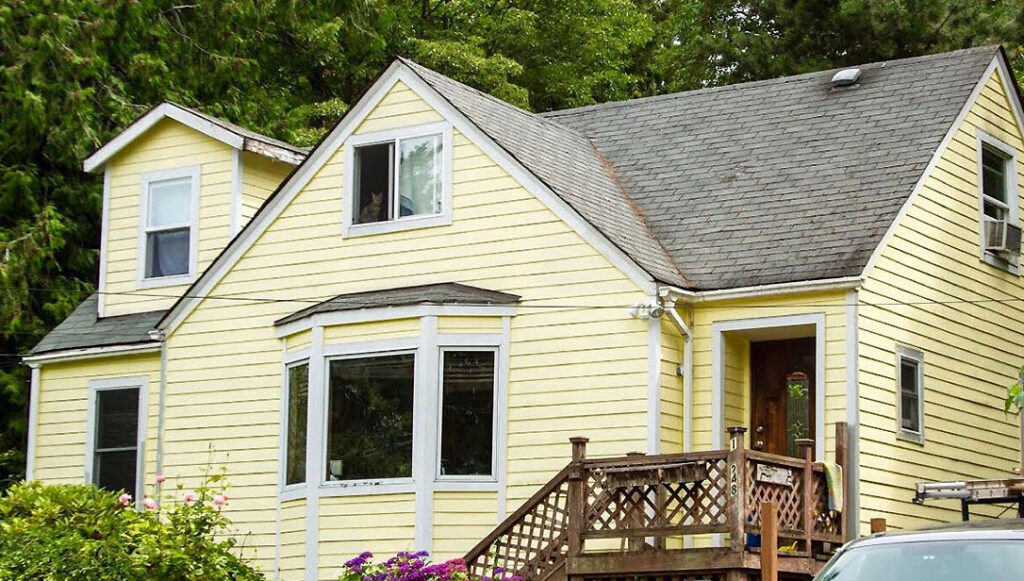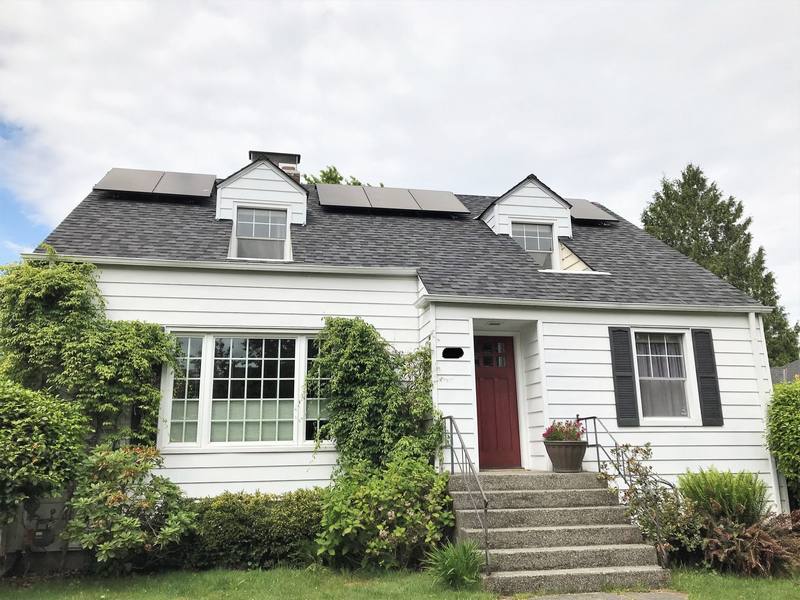Many homeowners today choose metal roofing for their homes. Among metal roof types, standing seam metal roofing is the most long-lasting, visually pleasing, and resistant to the elements. The climate of the Pacific Northwest (PNW) is ideal for this roof style as well.
What Is Standing Seam Metal Roofing?
The standing seam metal roof system uses long, vertical panels joined together by raised seams. These seams run continuously from the ridge to the eaves. Typically one to two inches high, these seams are the defining feature of the design.
Traditional metal roofs use screws or fasteners visible on the roof’s surface. Standing seam systems use clips concealed beneath the panels. This technique provides a watertight seal and a seamless appearance.
Standing seam roof panels can be made of steel, aluminum, zinc, or copper. Many homeowners prefer steel with a durable paint finish because of its strength and affordability.
How Standing Seam Differs from Other Metal Roofs
The standing seam system offers distinct advantages. Traditional metal roofs like corrugated panels use visible screws that penetrate the surface. Temperature fluctuations can loosen these screws over time, resulting in potential leaks and other issues.
Standing seam panels, in contrast, expand and contract with temperature changes. The concealed clips allow movement without compromising the roof’s structural integrity. This is beneficial to regions such as the PNW, with its frequent rainfall and varying temperatures.
Standing seam roofing also offers clean lines and a uniform surface that fits modern and transitional home designs. It is an ideal long-term roofing investment.
Why It Works Well in PNW Areas
The Pacific Northwest’s wet, cool, and windy conditions require roofing materials that can handle constant moisture and temperature changes. Standing seam metal roofing can meet these challenges. It performs well in Seattle and the surrounding communities because of:
Superior Water Shedding: Raised seams prevent water pooling and allow rain to drain efficiently. It helps prevent leaks during prolonged rainfall.
Moss and Algae Resistance: The non-porous metal surface discourages moss, algae, and mildew growth. These are common problems for shingle roofs in damp climates.
Wind Durability: Properly installed standing seam systems can withstand strong winds. They provide stability during winter storms that occasionally affect the Puget Sound area.
Energy Efficiency: Reflective coatings help regulate indoor temperatures, improving comfort and reducing energy costs.
Sustainability: Metal panels are often made from recycled materials. They are also fully recyclable at the end of their lifespan. This makes them an environmentally responsible choice.
Key Considerations for Installation and Replacement
Installing or replacing your old roof with a standing seam roof requires careful planning and professional expertise. Although the system is designed for durability, its performance depends on correct installation and high-quality materials.
Roof Slope: Standing seam works best on roofs with a moderate to steep slope. Low-slope roofs can still use this system, but require mechanically seamed panels and enhanced waterproofing to ensure watertight protection.
Underlayment and Insulation: Proper underlayment is essential for moisture control and temperature regulation. A high-performance synthetic underlayment or ice and water shield provides additional protection against wind-driven rain. Adequate insulation and ventilation also help reduce condensation beneath the panels.
Material Selection: Panels coated with durable finishes like PVDF or Kynar 500 resist fading and corrosion. This is especially important in coastal or high-moisture environments. Thicker metal gauges generally provide better strength and longer service life.
Noise and Condensation Control: When installed with solid decking and proper insulation, metal roofs produce minimal noise during rainfall. Managing attic ventilation further prevents condensation buildup that could lead to interior moisture problems.
Professional Installation: Standing seam metal roofing requires specialized tools and knowledge to ensure correct panel alignment and secure seams. Poor installation can lead to water penetration and subpar performance.
Homeowners in the Seattle area should work with a local contractor familiar with PNW weather patterns and building codes. A knowledgeable roofing professional can recommend the best panel type, gauge, and coating for long-term protection.
Invest in Quality Standing Seam Metal Roofing with Roofscapes NW
Standing seam metal roofing is a long-term investment that offers exceptional performance, modern appeal, and resistance to challenging weather. When properly installed, it can last 50 to 70 years with minimal maintenance, providing peace of mind and lasting value.
If you are considering a standing seam metal roof for your home, consult Roofscapes NW today. Our team specializes in premium roofing systems designed for the region’s unique climate. Contact us to schedule a consultation.



